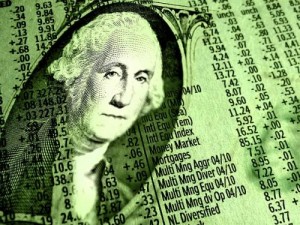Investors Are Making Big Money On Renewable Energy
 When Prudential Capital Group provided $121 million in financing for an Arizona solar power project earlier this year, and General Electric invested $1.4 billion in solar energy projects in 2011, they weren’t speculating in risky, early-stage technology ventures. They were investing in core infrastructure projects with high gross margins and revenues fixed for 20 to 25 years; “power plants with no fuel costs,” according to Bill Green, senior managing director at Macquarie Capital in New York.
When Prudential Capital Group provided $121 million in financing for an Arizona solar power project earlier this year, and General Electric invested $1.4 billion in solar energy projects in 2011, they weren’t speculating in risky, early-stage technology ventures. They were investing in core infrastructure projects with high gross margins and revenues fixed for 20 to 25 years; “power plants with no fuel costs,” according to Bill Green, senior managing director at Macquarie Capital in New York.Typically, according to Green, investors such as Prudential, Google and GE come in when virtually all the risk has been structured out through long-term agreements with large utilities that agree to purchase the power generated by these renewable energy generation projects. These projects offer stable, low double-digit rate of returns (IRRs) while generally paying out an annual yield in the range of 6-8 percent.
This attractive investment opportunity may surprise those who have seen sharp drops in share prices of companies that make the hardware used by renewable energy projects. Global manufacturers of wind turbines and solar panels have been facing stiff competition from Chinese manufacturers. But the falling price of this equipment has been a boon for renewable energy project developers whose installed costs are dropping dramatically.
Unfortunately, the high profile failure of Solyndra, a maker of thin-film solar cells, has spooked investors who often lump clean energy investments as diverse as electric cars and wind farms in one basket when they really fall into different asset classes. Green isn’t talking about seed capital for technologies that may or may not prove viable, but rather about investing in power generation projects using proven technologies supplied by multinational corporations. These solar, wind and biomass projects are evaluated strictly on their merits as cash generating assets in which risks and returns are based solely on that particular project’s viability.
Across the spectrum of clean energy opportunities, investment reached a record $260 billion worldwide in 2011 and for the first time since 2008, the U.S. surpassed China in clean energy investment. A sizable share of this clean energy investing is occurring in the renewable energy project finance arena that Green’s Macquarie Capital is active in.
Earlier this month, G.E. CEO Jeffrey Immelt, whose company is making big investments in renewables in Brazil, Canada, Kenya and the U.S., described the opportunity to a group of energy executives: “These things go in and out of style from a political standpoint or a social standpoint and people who can see through the troughs…are going to make a lot of money in renewable energy.”
Although Congress recently dealt a blow to the wind energy industry by failing to extend the production tax credit that helped incentivize wind power investment and production, and make it price-competitive with carbon energy sources, Immelt remains bullish on renewables and with good reason.
Clean energy investments in the U.S. will continue to be driven by so-called “Renewable Portfolio Standards” (RPSs) in 29 states and the District of Columbia. RPSs are targets and enforcement mechanisms for attaining a fixed percentage of a state’s total electric power mix from renewable energy. Currently, four percent of the nation’s electricity comes from non-hydroelectric renewables and is expected to double by 2025 as utilities strive to meet increased RPS targets. To meet RPS targets now in place, Macquarie’s Green says several hundred billion dollars of investment in renewable energy generation projects will be required between now and 2030. If RPS standards are increased that amount will go even higher.
These investments, according to Green, are “the single most actionable thing we can do with capital today to address both the desire for stable returns as well as the need for low-carbon energy.” Increasing the percentage of renewables in the nation’s energy mix also provides utilities with much needed diversification of supply, a hedge against volatile fossil fuel prices that can help stabilize electricity rates over the long-term.
RPSs also have mechanisms to limit ratepayer impacts should the cost of renewable and natural gas (the currently favored mix) begin to impact the price consumers pay for their power. As the renewable energy industry scales up, prices will become even more competitive: Clean Edge, which tracks developments in the clean-energy markets, estimates that the cost to install photo-voltaic solar systems will drop by almost two-thirds with the next decade.
The bottom line: For investors looking for financially sound, environmentally responsible, climate-friendly investments, renewable energy project finance is worth a very close look.
You can return to the main Market News page, or press the Back button on your browser.

